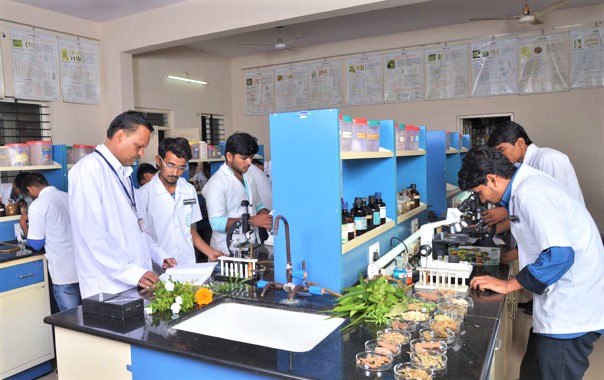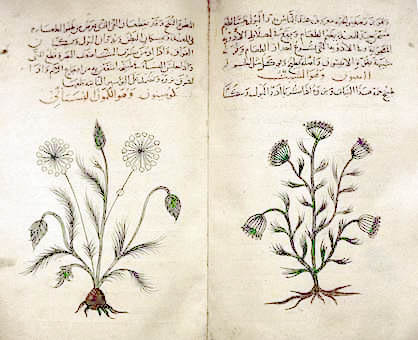What is Pharmacognosy? Pharmacognosy is the study of crude drugs of plant and animal origin. The American Society of Pharmacognosy defines Pharmacognosy as;
“The study of the physical, biochemical and biological properties of natural drugs and their chemical constituents. As well as the search for new drugs from natural sources.”
Introduction of Pharmacognosy
The word “Pharmacognosy” is derived from the Greek words pharmakon “, drug“, and gnosis “knowledge“. The term Pharmacognosy was used for the first time by the Austrian physician Schmidt in 1811 and 1815 by Seydler in work.
Initially, during the 19th century and the beginning of the 20th – century, “Pharmacognosy” was used to define the branch of – medicine which deals with drugs in their crude or unprepared form.
Pharmacognosy study is used to treat many diseases and are used in the cosmetic, textile, and food industries. In the first half-century, apothecaries carried the raw drugs needed to prepare herbal tea mixtures. They also had all types of extracts and juices that could be used to prepare medicinal drops, syrups or ointments.
Scope of Pharmacognosy
Pharmacognosy is the branch of science which deals with the biological, biochemical and economic features of natural drugs and their constituents. It also deals with the study of;
- Classification of Crude Drugs to know about the class of the
- Drug Cultivation, Collection, Drying, Storage, Preservation, Packing, Evaluation and adulteration of Crude Drugs.
- Plant growth hormones, for rapid & better growth of plants. Allergens & allergic preparations, to overcome the problems of Allergy.
- Enzymes, to cure & manage the diseases caused Enzymatic Deficiency.
- Poisonous Plants to prevent poison.
- Herbal drugs, used in traditional practice.
In the next few years, there will be more scopes for doctoral students in pharmacognosy. These are some of the many roles that the pharmacognosy would play:
- Academics: In colleges, universities, museums, and botanical gardens.
- Private industry: These include pharmaceutical companies, private commercial testing labs, and consumer product testing laboratories.
- Government: Position in federal agencies such as the Drug Enforcement Agency and the Food and Drug Administration, the U.S. Department of Agriculture and Medicinal Plant Research Laboratories, and state agencies such as forensic laboratories and environmental laboratories, etc.

History of Pharmacognosy
Pharmacognosy, the oldest branch in all of the pharmaceutical sciences, is Pharmacognosy. Prehistoric times saw the medicinal use of plants and Scope of Pharmacognosy. The following are some of the essential facts about medicinal plants: Primitive man understood the vegetable kingdom. Meadows and forests nourished him with the medicines required for his medical use. Observe and His crude experimentation with little intelligence led him to distinguish. There are two types of plants: harmful and useful.

Folk medicine, through the acquisition of knowledge about crude drugs, they were able to emerge. Very slowly, however, primitive man learned which plants were edible and which ones were toxic. Also, some condiments and plants preserved meat. Hidden unpleasant tastes and other plants could be used Extracts can be used as spear- or arrow-poison
The discovery of The healing powers of plants is as old as the human race itself. It was believed that the gods were responsible. It was thought that poisonous plants were reliable. These were the abodes for evil spirits and curative herbs—the abodes of beneficent spirits and deities.
Vegetable drug-collectors They have been known since the dawn of time. This is how many drugs are still available today. The first time it was used was in the present day. Even today, certain Primitive people, medical evolution is at this stage and it is often found that medicinal plants are the ones with the best reputation. Most are worthy of a detailed scientific examination.
Ancient Egyptian Period
The Ancient Egyptians 3000 B.C. Experts in the use of drugs to cure diseases The healing of the sick was Assisted by priest doctor and pharmacist “son”, who prescribed and Prepared medicines in was the first record of prescriptions. Egyptian tombs. These are the hieratic Papyri. These are the most valuable papyrus. It was discovered by E. Smith, also known for the surgical papyrus. It is also known as the surgical papyrus.
Copy of an ancient text, dated 2980-2700 B.C. These are the other papyri; The University of Oxford has preserved the Ebers Papyrus, dating back to 3500 BC. Leipzig and the gynecologic Papyrus of Kahun & Gurob. They contain approximately 400 primary materials.
Most likely in the “Egyptian pharmacopeia “The ancient Egyptians. This first group includes animals’ origin materials, e.g. Blood, meat, horns, milk, egg, and honey. The second group contains materials from vegetable origin, e.g. Acacia, Aloes, Gum, Myrrh and Pomegranate, Colocynth. Linseed. Coriander. Cumin. Anise. Castor…etc. They used all vegetable organs, e.g. Rhizomes, roots, flowers, fruits flowers, seeds, oils, and ashes.
The Mesopotamian Therapy Formulae
As known from the interpretations of The tables, Babylonian medicine was written in the cuneiform script (lows Hamorbi 772 B.C. ). These drugs mainly were of vegetable origin.
Babylonian king Mardouk Happaliden 11 (772 B.C.) Mardouk Happaliden 11 (772 B.C.) E.g. Apples, Pomegranate and Cucumber, Oranges, Garlic, Onion and Saffron Fennel, Thyme, Coriander, Rose, Laurel, Liquorices.
Old Indian Medicine
The primary goal of the Indians was to be free from all forms of oppression. The purpose of medicine was to prolong life. Therefore, the secret knowledge of vegetable drugs. The “Riveda” and Ayurveda (Acoko2000 B.C. ). The plants contained the afraid medicinal plants.
The fresh plants were considered most effective; the plants must be grown in fertile soil, washed with pure water, and exposed to the sun. They are shaded and directed towards the north, but they remain protected. They are protected in the shade, always directed towards the north. The purgative group includes the two types of drugs that have been classified.
Cathartics, emetics, and these increasing nasal flow; and tranquillizers. They used butter, honey sugar, milk decoctions and sesame oil. Oil as a base for oral medicine. These are the most well-known Indian drugs. Clove, Clove, Clove, Pepper and Caraway. Sesame oil and Aloes. Galangal, cane Sugar.
The Old Chinese Medicine
The famous acupuncture is not the only thing that’s amazing about it. The herbal medicine of Chinese medicine is well-recognized. The Pen Ts’ao Kang Moa 1000 B.C. This article was published in 1597. There are a lot of drugs and medicinal plants of animal origin.
There are many medicinal plants and drugs of animal origin. Chinese believed that every disease must have a treatment. Nature provides the recipes. Their book contains many recipes that can be used for any occasion. Disease. One of the most highly regarded plants for its magical health-inducing properties.
Ginseng is the power and other drugs such as. Rhubarb, Star-Anise, Pomegranate, The use of Aconite drugs was widespread.
The Pen Ts’ao Kang Moa could be a good choice. It can be considered a pharmacopeia because it contains 8160 formulae prepared from 1871 raw materials primarily of vegetable origin. These drugs were used In the form of powders, pills and decoctions. Ointments. You can learn a lot from ancient Chinese medicine.
The Romans and the Greeks
Many diseases were treated with drugs. Pythagoras (580 B.C. Used Drugs as Mustard. Hippocrates (466 B.C. Hippocrates (466 B.C.) was well-known for many Drugs and wrote Corpus Hipocraticum in 460 B.C. Theophrates (370 B.C. Aristotle’s pupil Ergot enumerated 500 plants.
The Invasion of Alexander the Great (335-325 B.C. The increase in the There were many drugs at the time. Following the Greek Empire, Dioscorides, who was born a Greek, and the Romans travelled.
Egypt and other countries bordering the Mediterranean Sea became familiar with many different drugs and plants. He was the first to refer to drugs, and his “Greek Herbal of Dioscorides” included not There are less than 5000 medicinal herbs, in addition to animal or mineral. Drugs. He is the most famous Pharmacognosist.
Piny, who lived around the same time Dioscrides was also an important author of natural history.
After the fall of the Roman Empire, scientific activity was regressed until the rise of the Arabian Empire.
CONCLUSION
If you enjoyed “What is Pharmacognosy and Scope of Pharmacognosy?”, I’d be very thankful if you’d help it spread by emailing it to your friends or sharing it on Twitter, Instagram, or Facebook. Thank you!
Did you read some Scope of Pharmacognosy on the way? Which one do you read? Let us know if you have any question. We will gladly explain!
Related Topics: If you really enjoy Scope of Pharmacognosy, then there are some more interesting articles for you!







